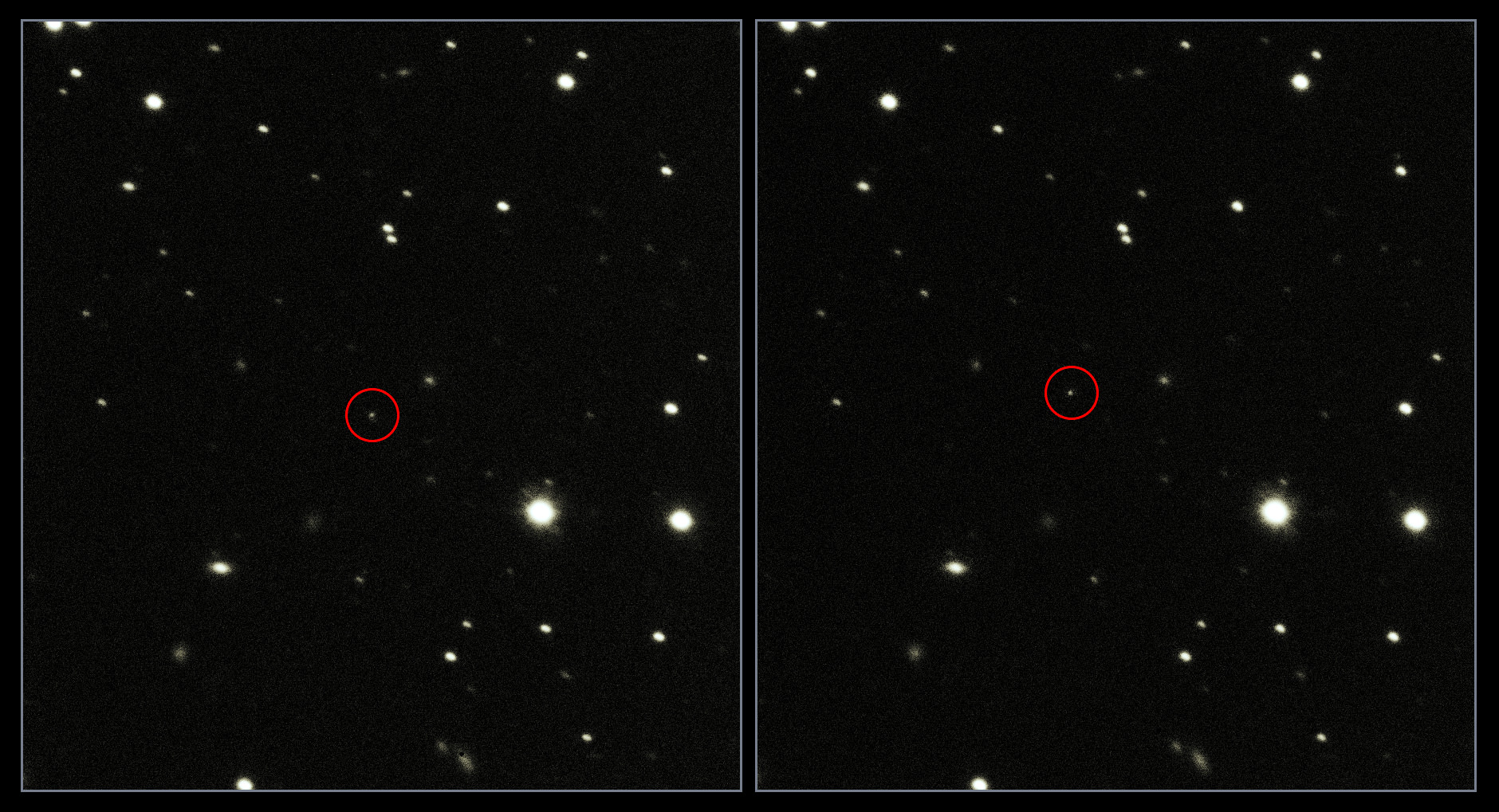The European Gaia spacecraft launched about a year ago with the ambitious goal of mapping one billion years in the Milky Way. That’s 1% of all the stars in our entire galaxy, which it will monitor about 70 times over its 5-year mission. If all goes well, we’ll learn an enormous amount about the structure, movements and evolution of the stars in our galaxy. It’ll even find half a million quasars.
Continue reading “Astronomy Cast Ep. 365: Gaia”
Will Gaia Be Our Next Big Exoplanet Hunter?

Early on the morning of Dec. 19, 2013, the pre-dawn sky above the coastal town of Kourou in French Guiana was briefly sliced by the brilliant exhaust of a Soyuz VS06 rocket as it ferried ESA’s “billion-star surveyor” Gaia into space, on its way to begin a five-year mission to map the precise locations of our galaxy’s stars. From its position in orbit around L2 Gaia will ultimately catalog the positions of over a billion stars… and in the meantime it will also locate a surprising amount of Jupiter-sized exoplanets – an estimated 21,000 by the end of its primary mission in 2019.
And, should Gaia continue observations in extended missions beyond 2019 improvements in detection methods will likely turn up even more exoplanets, anywhere from 50,000 to 90,000 over the course of a ten-year mission. Gaia could very well far surpass NASA’s Kepler spacecraft for exoplanet big game hunting!
“It is not just the number of expected exoplanet discoveries that is impressive”, said former mission project scientist Michael Perryman, lead author on a report titled Astrometric Exoplanet Detection with Gaia. “This particular measurement method will give us planet masses, a complete exoplanet survey around all types of stars in our Galaxy, and will advance our knowledge of the existence of massive planets orbiting far out from their host stars”.
Watch: ESA’s Gaia Launches to Map the Milky Way

The planets Gaia will be able to spot are expected to be anywhere from 1 to fifteen times the mass of Jupiter in orbit around Sun-like stars out to a distance of about 500 parsecs (1,630 light-years) from our own Solar System. Exoplanets orbiting smaller red dwarf stars will also be detectable, but only within about a fifth of that distance.
While other space observatories like NASA’s Kepler and CNES/ESA’s CoRoT were designed to detect exoplanets through the transit method, whereby a star’s brightness is dimmed ever-so-slightly by the silhouette of a passing planet, Gaia will detect particularly high-mass exoplanets by the gravitational wobble they impart to their host stars as they travel around them in orbit. This is known as the astrometric method.
A select few of those exoplanets will also be transiting their host stars as seen from Earth – anywhere from 25 to 50 of them – and so will be observable by Gaia as well as from many ground-based transit-detection observatories.
Read more: Gaia is “Go” for Science After a Few Minor Hiccups
After some issues with stray light sneaking into its optics, Gaia was finally given the green light to begin science observations at the end of July and has since been diligently scanning the stars from L2, 1.5 million km from Earth.
With the incredible ability to measure the positions of a billion stars each to an accuracy of 24 microarcseconds – that’s like measuring the width of a human hair from 1,000 km – Gaia won’t be “just” an unprecedented galactic mapmaker but also a world-class exoplanet detector! Get more facts about the Gaia mission here.
The team’s findings have been accepted for publication in The Astrophysical Journal.
Source: ESA
GAIA is “Go” for Science After a few Minor Hiccups
In astronomy we throw around the term “light-year” seemingly as fast as light itself travels. And yet actually measuring this distance is incredibly tricky. A star’s parallax — its tiny apparent shift once a year caused by our moving viewpoint on Earth — tells its distance more truly than any other method.
Accurate parallaxes of nearby stars form the base of the entire cosmic distance ladder out to the farthest galaxies. It’s a crucial science that’s about to take a giant leap forward. The European Space Agency’s long-awaited Gaia observatory — launched on Dec. 19, 2013 — is now ready to begin its science mission. Continue reading “GAIA is “Go” for Science After a few Minor Hiccups”
Is Our Solar System Weird?

Is our Solar System normal? Or is it weird? How does the Solar System fit within the strange star systems we’ve discovered in the Milky Way so far?
With all the beautiful images that come down the pipe from Hubble, our Solar System has been left with celestial body image questions rivaling that of your average teenager. They’re questions we’re all familiar with. Is my posture crooked? Do I look pasty? Are my arms too long? Is it supposed to bulge out like this in the middle? Some of my larger asteroids are slightly asymmetrical. Can everyone tell? And of course the toughest question of all… Am I normal?
The idea that stars are suns with planets orbiting them dates back to early human history. This was generally accompanied by the idea that other planetary systems would be much like our own. It’s only in the last few decades that we’ve had real evidence of planets around other stars, known as exoplanets. The first extrasolar planet was discovered around a pulsar in 1992 and the first “hot jupiter” was discovered in 1995.
Most of the known exoplanets have been discovered by the amazing Kepler spacecraft. Kepler uses the transit method, observing stars over long periods of time to see if they dim as a planet passes in front of the star. Since then, astronomers have found more than 1700 exoplanets, and 460 stars are known to have multiple planets. Most of these stellar systems are around main sequence stars, just like the Sun. Leaving us with plenty of systems for comparison.
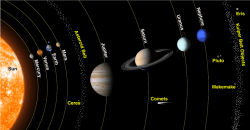
So, is our Solar System normal? Planets in a stellar system tend to have roughly circular orbits, just like our Solar system. They have a range of larger and smaller planets, just like ours. Most of the known systems are even around G-type stars. Just like ours.….and we are even starting to find Earth-size planets in the habitable zones of their stars. JUST LIKE OURS!
Not so fast…Other stellar systems don’t seem to have the division of small rocky planets closer to the star and larger gas planets farther away. In fact, large Jupiter-type planets are generally found close to the star. This makes our solar system rather unusual.
Computer simulations of early planetary formation shows that large planets tend to move inward toward their star as they form, due to its interaction with the material of the protoplanetary disk. This would imply that large planets are often close to the star, which is what we observe. Large planets in our own system are unusually distant from the Sun because of a gravitational dance between Jupiter and Saturn that happened when our Solar System was young.

Although our Solar System is slightly unusual, there are some planetary systems that are downright quirky. There are planetary systems where the orbits are tilted at radically different angles, like Kepler 56, and a sci-fi favorite, the planets that orbit two stars like Kepler 16 and 34. There is even a planet so close to its star that its year lasts only 18 hours, known 55 Cancri e.
And so, the Kepler telescope has presented us with a wealth of exoplanets, that we can compare our beautiful Solar System to. Future telescopes such as Gaia, which was launched in 2013, TESS and PLATO slated for launch in 2017 and 2024 will likely discover even more. Perhaps even discovering the holy grail of exoplanets, a habitable planet with life…
And the who knows, maybe we’ll find another planet… just like ours.
What say you? Where should we go looking for habitable worlds in this big bad universe of ours? Tell us in the comments.
And if you like what you see, come check out our Patreon page and find out how you can get these videos early while helping us bring you more great content!
Gaia Space Telescope Team Battles ‘Stray Light’ Problems At Start Of Mission
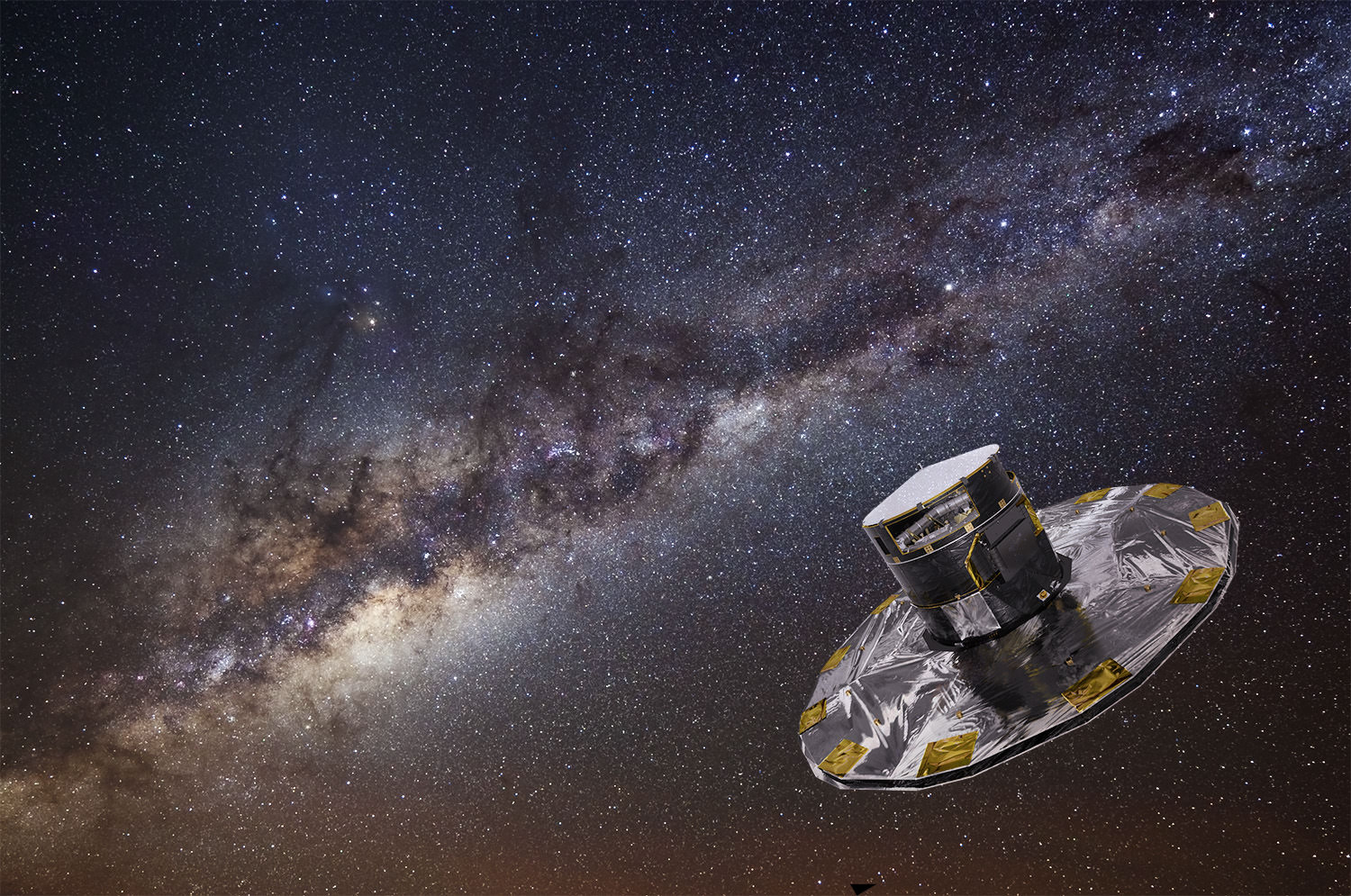
Europe’s powerful Milky Way mapper is facing some problems as controllers ready the Gaia telescope for operations. It turns out that there is “stray light” bleeding into the telescope, which will affect how well it can see the stars around it. Also, the telescope optics are also not transmitting as efficiently as the design predicted.
Controllers emphasize the light problem would only affect the faintest visible stars, and that tests are ongoing to minimize the impact on the mission. Still, there will be some effect on how well Gaia can map the stars around it due to this issue.
“While there will likely be some loss relative to Gaia’s pre-launch performance predictions, we already know that the scientific return from the mission will still be immense, revolutionizing our understanding of the formation and evolution of our Milky Way galaxy and much else,” wrote the Gaia project team in a blog post.
Both of these problems have been known publicly since April, and the team has been working hard in recent months to pinpoint the cause. Of the two of them, it appears the team is having the most success with the optics transmission problems. They have traced the issue to water vapor in the telescope that freezes (no surprise since Gaia operates between -100 degrees Celsius and -150 Celsius, or -148 Fahrenheit and -238 Fahrenheit.)

The team turned on heaters on Gaia (on its mirrors and focal plane) to get rid of the ice before turning the temperature back down so the telescope can do its work. While some ice was anticipated (that’s why the heaters were there) there was more than expected. The spacecraft is also expected to equalize its internal pressure over time, sending out gases that again, could freeze and cause interference, so more of these “decontamination” procedures are expected.
The stray light problem is proving to be more stubborn. The light waves from sunlight and brighter sources of light in the sky are likely moving around the sunshield and bleeding into the telescope optics, which was unexpected (but the team is now trying to model and explain.)
Perhaps it was more ice. The challenge is, there were no heaters placed into the thermal tent area that could be responsible for the issue, so the team at first considered moving the position of Gaia to have sunlight strike that area and melt the ice.

Simulations showed no safety problems with the idea, but “there is currently no plan to do so,” the team wrote. That’s because some tests on ground equipment in European laboratories didn’t show any strong evidence for or against layers of ice interfering with the stray light. So there didn’t seem to be much point to doing the procedure.
So instead, the idea is to do “modified observing strategies” to collect the data and then tweaking the software on the spacecraft and on the ground to “best optimize the data we will collect,” Gaia managers wrote.
“The stray light is variable across Gaia’s focal plane and variable with time, and has a different effect on each of Gaia’s science instruments and the corresponding science goals. Thus, it is not easy to characterise its impact in a simple way,” they added. They predict, however, that a star at magnitude 20 (the limit of Gaia’s powers) would see its positional accuracy mapping reduced by about 50%, while stars that are brighter would have less impact.
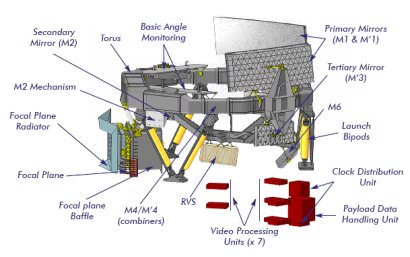
“It is important to realize that for many of Gaia’s science goals, it is these relatively brighter stars and their much higher accuracy positions that are critical, and so it is good to see that they are essentially unaffected. Also, the total number of stars detected and measured will remain unchanged,” the managers added.
The team is also tracking a smaller issue with a system that is supposed to measure the angle of separation between the two telescopes of Gaia. It’s needed to measure how small changes in temperature affect the angle between the telescopes. While the system is just fine, the angle is varying more than expected, and more work will be needed to figure out what to do next.
But nevertheless, Gaia is just about ready to start a science session that will last about a month. The team expects to have a better handle on what the telescope is capable of, and how to work with these issues, after that time. Gaia operates about 1.5 million km (932,000 miles) away from Earth in a gravitationally stable point in space known as L2, so it’s a bit too far for a house call such as what we were used to with the Hubble Space Telescope.
Source: European Space Agency
ESA Marks 50 Years of Cooperative Space Innovation
In 1964 the European Launcher Development Organisation (ELDO) and the European Space Research Organisation (ESRO) were founded, on February 29 and March 20 respectively, marking the beginning of Europe as a major space power and player in the new international venture to explore beyond our planet. A decade later these two entities merged to become ESA, and the rest, as it’s said, is history.
The video above commemorates ESA’s service to the cooperation and innovation of European nations in space, and indeed the entire world with many of the far-reaching exploration missions its member states have developed, launched and maintained. From advanced communications and observational satellites to its many missions exploring the worlds of the Solar System to capturing the light from the beginning of the Universe, ELDO, ESRO, and ESA have pushed the boundaries of science and technology in space for half a century… and are inspiring the next generation to continue exploring into the decades ahead. So happy anniversary, ESA — I can only imagine what we might be looking back on in another 50 years!
Keeping An Eye On Gaia
Gaia, ESA’s long-anticipated mission to map the stars of our galaxy (as well as do a slew of other cool science things) is now tucked comfortably in its position in orbit around Earth-Moon L2, a gravitationally stable spot in space 1.5 million km (932,000 miles) away.
Once its mission begins in earnest, Gaia will watch about a billion stars an average of 70 times each over a five-year span… that’s 40 million observations every day. It will measure the position and key physical properties of each star, including its brightness, temperature and chemical composition, and help astronomers create the most detailed 3D map of the Milky Way ever.
But before Gaia can do this, its own position must be precisely determined. And so several of the world’s most high-powered telescopes are trained on Gaia, keeping track daily of exactly where it is up to an accuracy of 150 meters… which, with the ten-meter-wide spacecraft one and a half million kilometers away, isn’t too shabby.
Called GBOT, for Ground Based Orbit Tracking, the campaign to monitor Gaia’s position was first set up in 2008 — long before the mission launched. This allowed participating observatories to practice targeting on other existing spacecraft, like NASA’s WMAP and ESA’s Planck space telescopes.
The image above shows an image of Gaia (circled) as seen by the European Southern Observatory’s Very Large Telescope Survey Telescope (VST) atop Cerro Paranal in Chile, one of the supporting observatories in the GBOT campaign. The images were taken with the 2.6-meter Survey Telescope’s 268-megapixel OmegaCAM on Jan. 23, 6.5 minutes apart. With just the reflected sunlight off its circular sunshield, the distant spacecraft is about a million times fainter than what your eyes could see unaided.
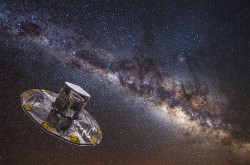
It’s also one the closest objects ever imaged by the VST.
Currently Gaia is still undergoing calibration for its survey mission. Some problems have been encountered with stray sunlight reaching its detectors, and this may be due to the angle of the sunshield being a few degrees too high relative to the Sun. It could take a few weeks to implement an orientation correction; read more on the Gaia blog here.
Read more: Ghostly Cat’s Eye Nebula Shines In Space Telescope Calibration Image
Of the billion stars Gaia will observe, 99% have never had their distances accurately measured. Gaia will also observe 500,000 distant quasars, search for brown dwarfs and exoplanets, and will conduct experiments testing Einstein’s General Theory of Relativity. Find out more facts about the mission here.
Gaia launched on December 19, 2013, aboard a Soyuz VS06 from ESA’s spaceport in Kourou, French Guiana. Watch the launch here.
Source: ESA
Ghostly Cat’s Eye Nebula Shines In Space Telescope Calibration Image
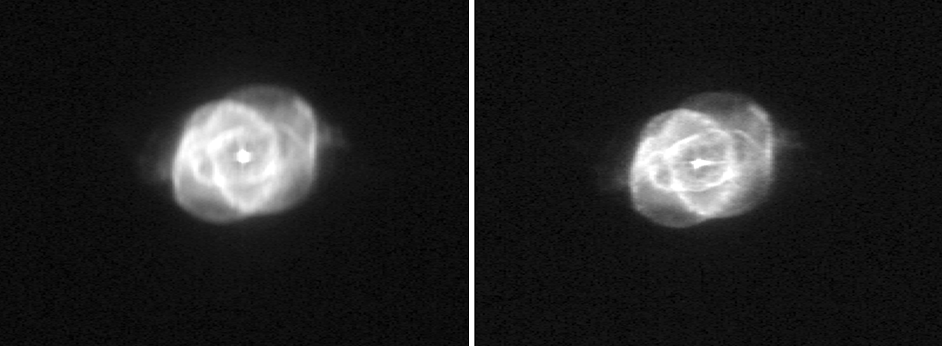
Here’s a glimpse of how a telescope gets ready for its main mission. The European Space Agency’s Gaia telescope is in the middle of a commissioning phase before mapping out the locations of stars and other objects in the Milky Way. While the nominal mission is not to take pictures, it is through these images that controllers can verify that the telescope is tuned properly to do its work.
What you’re seeing is data from the Gaia camera’s “sky-mapper strips” that are actually intensity maps rendered in black and white, ESA explained. You can see in the picture above that the shot on the left is a bit blurry, while the one on the right looks a bit sharper. That’s because controllers better calibrated the charged coupled devices to the spacecraft’s spin rate, ESA said.
Lucky for us, ESA is sharing those images so we can see the process in action. This set of pictures below follows on from a calibration image of the Large Magellanic Cloud that was released last week. More details are available at ESA and also in this Dec. 19 Universe Today story.
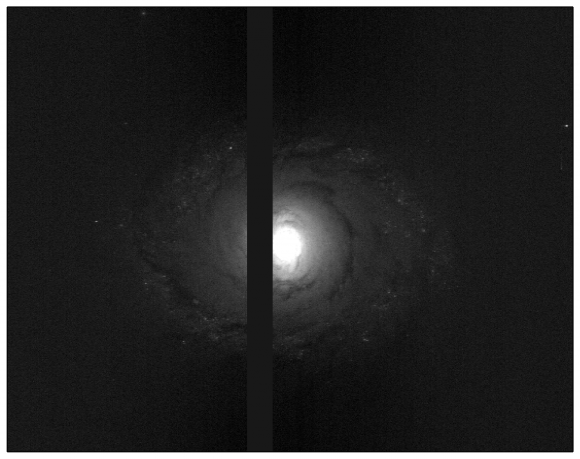
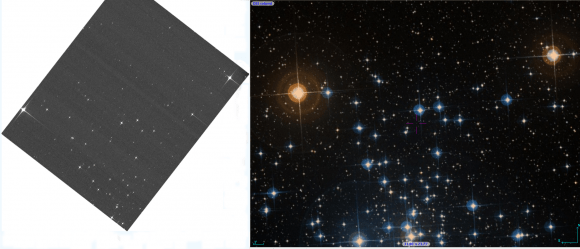
Weekly Space Hangout – February 7, 2014: New Impact on Mars & A Wobbly Planet
Host: Fraser Cain
Astrojournalists: Scott Lewis, Nicole Gugliucci, Morgan Rehnberg, Brian Koberlein, Elizabeth Howell, Amy Shira Teitel, David Dickinson
This Week’s Stories!
Morgan Rehnberg (cosmicchatter.org / @cosmic_chatter):
New Mars impact crater
Nicole Gugliucci (cosmoquest.org / @noisyastronomer):
Weird Asteroid Itokawa Has a Dual Personality
Shiny new radio image of M82 (but no supernova afterglow)
David Dickinson (@astroguyz):
Venus in 2014
Progress+launches for February
Space History-Curious Artifacts Sent Into Space
Elizabeth Howell (@howellspace):
Astronomy Podcast Enters Sixth Year — And We’d Love For You To Contribute!
Super-Earths Could Be More ‘Superhabitable’ Than Planets Like Ours
Brian Koberlein (@briankoberlein); Scott Lewis (@baldastronomer); & Elizabeth Howell (@howellspace):
‘Wobbly’ Alien Planet Has Weird Seasons And Orbits Two Stars
Amy Shira Teitel (@astVintageSpace):
When galaxies collide!
Scott Lewis (@baldastronomer):
Gaia
We record the Weekly Space Hangout every Friday at 12:00 pm Pacific / 3:00 pm Eastern. You can watch us live on Google+, Universe Today, or the Universe Today YouTube page.
Milky Way-Mapping Telescope Nabs Its First Pictures In Space
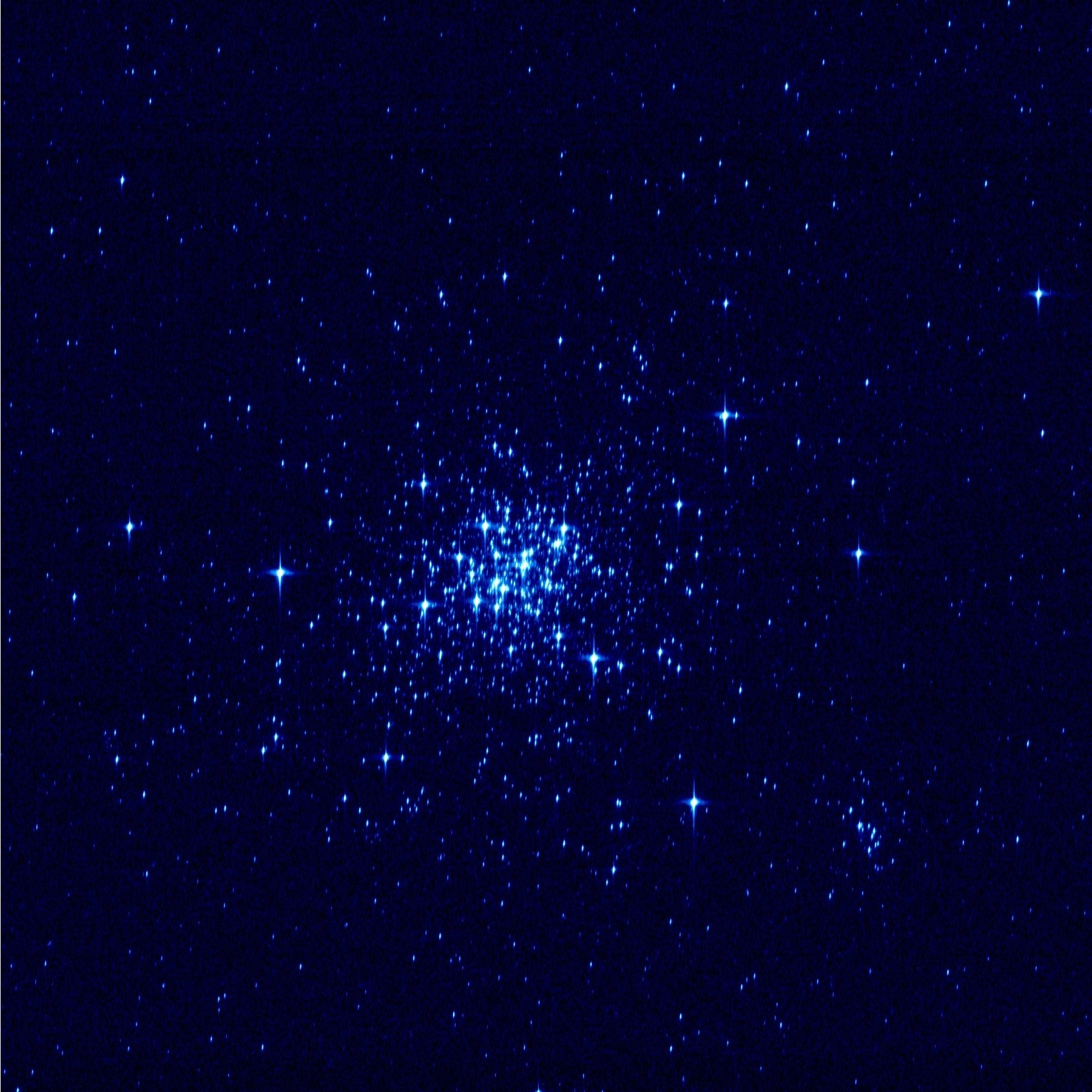
From a lonely outpost in space, the European Space Agency’s Gaia telescope is getting ready to map out the Milky Way. It will take some time to calibrate the instruments to make sure they’re ready for work, however, and that’s why you’re looking at the image above.
Controllers aimed the telescope at the Large Magellanic Cloud, which is a satellite galaxy to our own Milky Way, and snapped this picture of star cluster NGC 1818.
“This test picture, taken as part of commissioning the mission to ‘fine tune’ the behaviour of the instruments, is one of the first proper ‘images’ to be seen from Gaia, but ironically, it will also be one of the last, as Gaia’s main scientific operational mode does not involve sending full images back to Earth,” ESA stated.
This is one crucial step along the road to making sure Gaia’s measurements are accurate. In the next five years, it will examine a billion stars (an astounding number, but still only 1 percent of the galaxy’s population). Gaia will build up a database of key stellar properties such as brightness, what it is made of and temperature.
For more information on Gaia, check out this past Universe Today story from its Dec. 19 launch as well as the official Gaia blog.
Source: ESA



